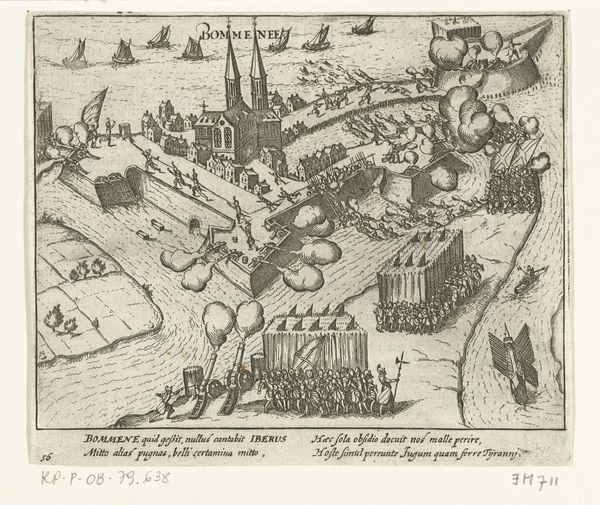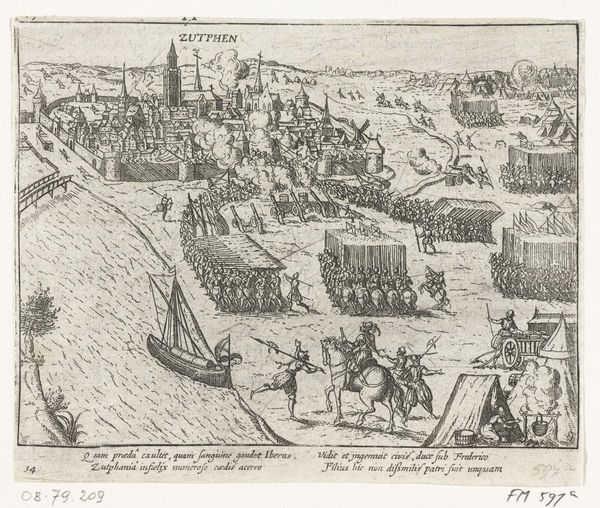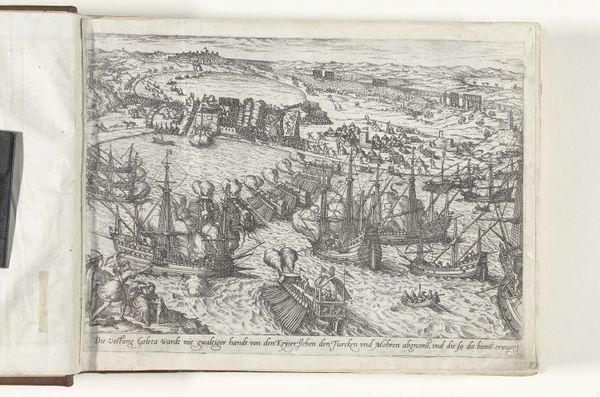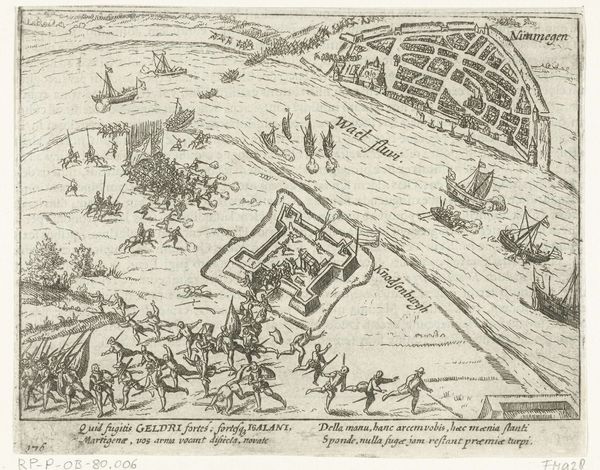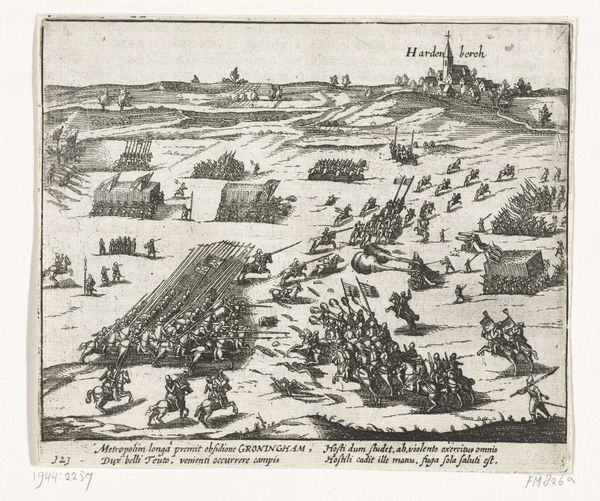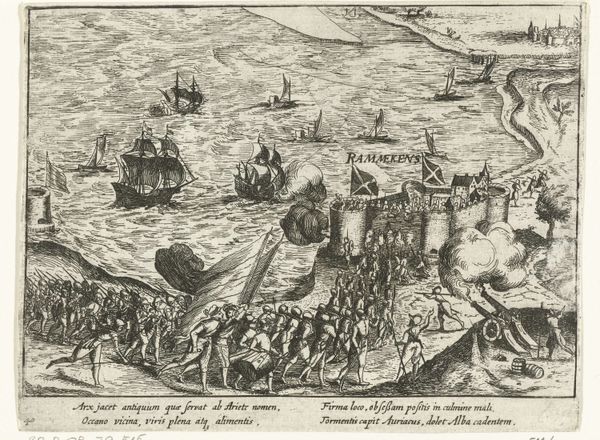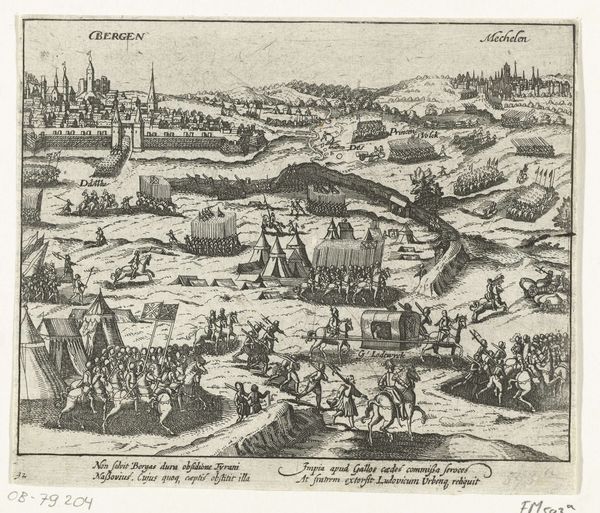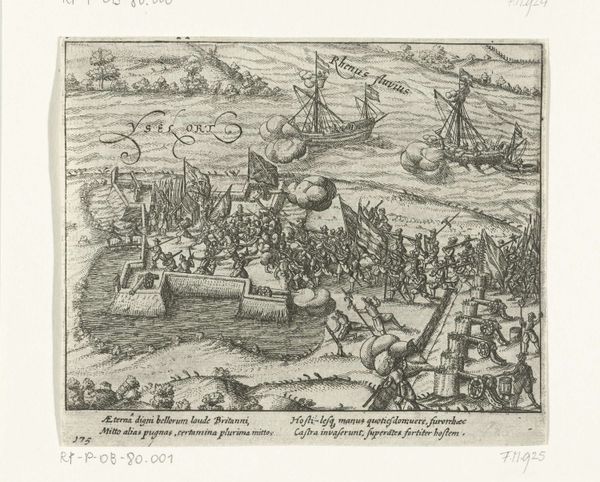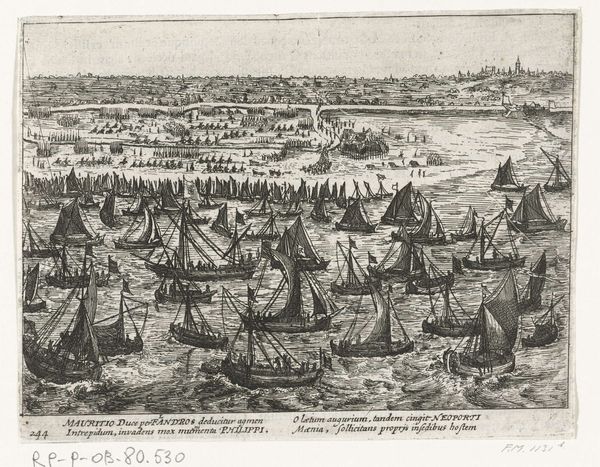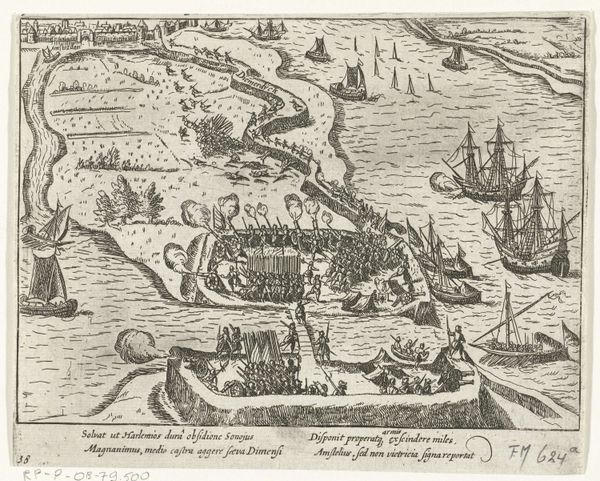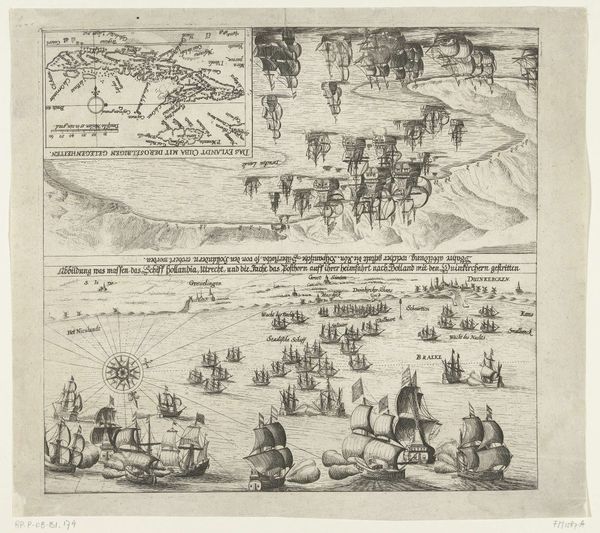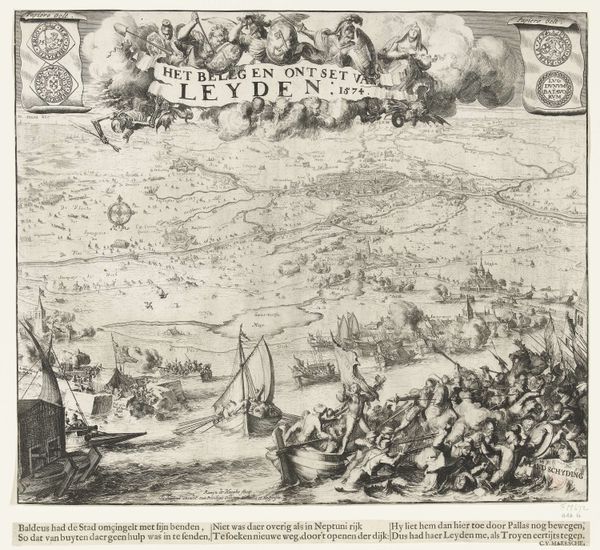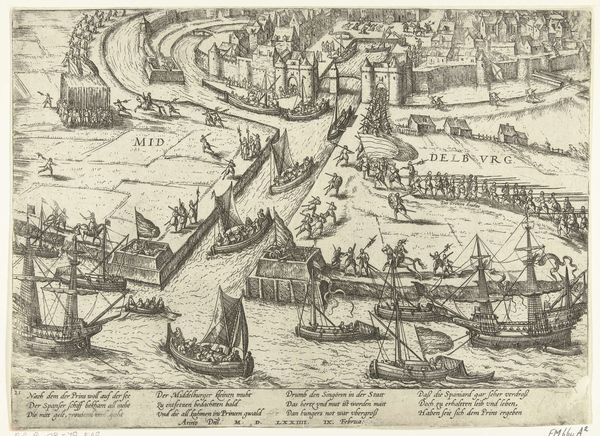
print, etching, engraving
#
pen drawing
#
dutch-golden-age
#
mechanical pen drawing
# print
#
pen illustration
#
pen sketch
#
etching
#
landscape
#
personal sketchbook
#
linework heavy
#
pen-ink sketch
#
line
#
pen work
#
sketchbook drawing
#
history-painting
#
storyboard and sketchbook work
#
engraving
Dimensions: height 136 mm, width 161 mm
Copyright: Rijks Museum: Open Domain
Editor: This etching, "Inname van Den Briel door de watergeuzen, 1572," made between 1613 and 1615, depicts a historical event. Looking at the busy composition and the clear distinction between land and sea, I immediately wonder about the story it's trying to tell and what kind of context would have given rise to the creation of this print. How do you interpret this work? Curator: It's a fascinating piece, isn’t it? The capture of Brielle by the Watergeuzen. We can read this not just as a depiction of a military action but as a crucial turning point in Dutch history, specifically within the Eighty Years’ War. Think about the context: the Netherlands were fighting for independence from Spanish rule. What does the detailed rendering of ships and the fortified city suggest about power dynamics at the time? Editor: It seems to show the Dutch naval strength in contrast to the more established power of the Spanish. Curator: Precisely. The image becomes a statement of resistance, doesn't it? Consider who the “Watergeuzen” were— essentially rebels and outcasts. How might this event, and its subsequent depiction, have functioned as propaganda to rally support for the Dutch cause, shaping a national identity rooted in rebellion and independence? How do you think such imagery would have been perceived by different social classes within the Netherlands at the time? Editor: I imagine it would be very empowering for the lower classes, who were directly affected by Spanish rule, while perhaps unsettling for the elite who might have had more to lose in a revolution. Curator: An excellent point. It's crucial to understand that historical events aren't monolithic. The impact ripples differently based on class, religion, and geographical location. Editor: That’s so helpful! Seeing it as a tool for shaping a national identity really broadens my understanding of the print. Thanks! Curator: Indeed, looking at art as a reflection and agent of social change allows us a richer understanding of not just the past, but the ongoing negotiation of power and identity.
Comments
No comments
Be the first to comment and join the conversation on the ultimate creative platform.
